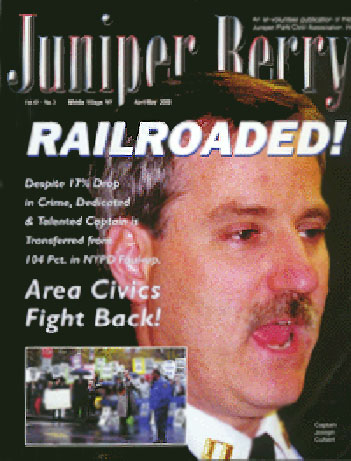During a discussion of new nouns, new things in one's lifetime, a student recently asked me if I had a skateboard as a boy. I then explained to him about making scooters in my youth out of disassembled roller skates (not skateboards), 2 X 4's, and wooden crates. Ever since that brief discussion
I have been reminiscing about some of the handcrafted things my friends and I played with as children back in the South Bronx in the 1950s, and somehow tin bottle caps permeate these memories.
Bottle caps were among the first things I collected. They were plentiful
in that era before canned beverages and came from heavy glass bottles, like those still used on today's bottled beers. Unlike the banal, generic twist-off caps from current plastic soda bottles, these bottle tops bore the
colorful logos of such companies as Hire's, Cott's, Miller's, Schlitz, 7 Up,
Coca-Cola, and Pepsi. Their distinctive fluted edges, miniature pie plates,
that felt good in a kid's hands and could be used to play skully.
Skully (a/k/a skelly and skullsy, depending where in New York one grew up) was sort of shuffleboard for the street. Its playing field was a board drawn on the pavement in broad strokes of chalk: a huge square that enclosed smaller numbered squares along its four sides and in the center. We always seemed to have sidewalk chalk in our pockets back then. For some unremembered reason it was called Indian chalk, in those pre-PC days. Even
if any one of us tried to use school chalk filched from some homeroom, its skinny little white lines just did not have the same look: the wide expanse of pale yellow or light blue from the thick chunks of street chalk seemed just right. The players numbered any amount of neighborhood boys who wanted to play. The neighborhood girls did not join in, for they were either playing with their dolls, jumping rope, or helping their mothers. The girls had their own street game, potsie, also using a chalk-drawn playing field, but it
required jumping on one leg into series or squares, not kneeling down in the street to flick checkers with one's dirty fingernail as in skully.
The object was to propel your “checker” or “man,” the weighted
bottle cap, into the boxes, use your checker to push the opponent out of the box, and move onto the next numbered square.
What made the checkers more competitive tools were the weights inside. While the less meticulous kids simply pushed orange peels into the bottle caps, most of us cared enough, instead, to melt wax into them. First one removed the cork disk liner from the tin cap, presumably because the wax weighed more without cork inside. Household candles melted quickly, but the clear hot wax cooled into a plain opaque filler that was too ghostly, reminding me of what I figured my immortal soul was supposed to look like.
The nuns who taught elementary school were always talking about our
immortal souls, which were supposed to be white but had the stain of sin on them. A waxy image came to mind, and so for years I thought the human soul looked like uncooked fish fillet. (As a child I may have heard someone mention “fillet of sole” (and made a naive connection….) Besides, the similarly colorless household candles with their pallid, raw-fish connotation were not as much fun to melt into our bottle caps as were bright multihued Crayola crayons, which we were convinced were heavier than plain old wax.
(In this era, too, kids could buy bottle-cap candy, oversize metal caps
filled with a smooth icing-like concoction in creamy pastel colors. The big caps came with flat tin spoons, as sharp as those pop-top can tabs that
easily cut your fingers a decade later, but these huge caps were not
“regulation” size for skully.)
Getting back to the scooters, the personally-made racers that started
this reminiscence, recycled bottle caps were used as finishing touches,
metallic details echoing the smooth chrome popular in 1950s cars. The kids would not merely paint some sort of ID onto the fronts of wooden crates nailed atop early skateboards with sticks for handlebars nailed onto the crates. We had to stud the scooters' front ends with hammered on
bottle caps in various configurations: usually our initials or nicknames. Mine was “Jr.” named as I was after my dad.
It took pockets full of bottle caps to ID our scooters properly, and
getting them was fun too, for it meant a trip back to the grocer's Coca-Cola refrigerator on the side of which was a bottle opener with a big receptacle filled with a motherlode of caps! They were still fragrant with soda and beer and the corks were cool from the ice. As we stuffed our pockets we could glance up at the banners announcing the latest Vote for Miss Reingold's competition and unofficially choose our favorites from the color headshots of these wholesome beauties, somehow maybe even prettier than their Miss Subways counterparts from the New York Transit Authority.
Forty years later, the century now extinguished, fondly I think back now on those simpler times of mostly forgotten Miss Reingolds, scooter races, skully games, and wax-filled bottle caps that reminded me of my immortal soul.


